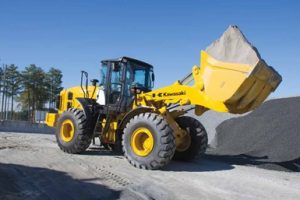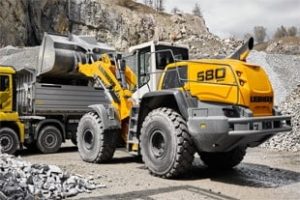Tips on Getting the Most out of your Wheel Loader
One of the most popular attributes of wheel loaders is their versatility. That certainly makes them more valuable, but it can also make your purchasing decision more complicated. It would be easy to select the ideal machine if it only had to perform one task. But to get the most productivity from your multi-tasking wheel loader requires some trade-offs.
The more your wheel loader works, the more it earns
 Uptime equates directly to return on your investment, so you want to choose the machine that can do the most for your construction firm. That depends on the kind of jobs you do, working conditions, etc. but the most important consideration is loading. In a perfect world, you’d finish loading a truck just as the next one arrives.
Uptime equates directly to return on your investment, so you want to choose the machine that can do the most for your construction firm. That depends on the kind of jobs you do, working conditions, etc. but the most important consideration is loading. In a perfect world, you’d finish loading a truck just as the next one arrives.
Loader efficiency depends on the number of passes required to load a truck. And that depends on bucket size, loader travel distance/cycle time, truck capacity and frequency of truck availability. A general rule of thumb is 3 or 4 passes to load an on-road truck, but what is optimal for your jobsite depends on all four of the variables mentioned.
Ideal bucket capacity depends on the material
Choosing a bigger bucket does not necessarily mean your wheel loader will be able to perform more work, faster. Different materials have very different densities, and that affects bucket fill. For example, the density of clean, washed, ½-inch aggregate might be 2,500 lbs./cu. yd. In general, washed material has a wheel loader bucket fill factor of around 90%-95%. On the other hand, the base material is likely to contain a high percentage of fines, so its density could be 3,000 lbs./cu. yd. Base material typically has a high bucket fill factor – around 110%-120%.
These differences directly affect payload. Therefore, experts suggest you’ll get the greatest productivity and longevity from your wheel loader if you identify your ideal bucket size first, based on material density and consistency. In some applications, wheel loaders work with the same type of material all the time. In other applications, materials vary. Understanding the trade-offs is critical, because exceeding the manufacturer’s recommended targets for loading cycle and working payload will reduce efficiency and machine life.
To choose the best bucket size, you should consider:
- What kind of per-day production you want to achieve
- How many tons of material that equates to
- Material density
Then you can choose the optimal wheel loader
 Truck flow is a key consideration as you’re evaluating your “typical” loading operation. Do you usually have a steady parade of trucks to be filled, or – as if often the case – is there lag time between trucks? On some jobsites, you may not have control over truck flow. Is this a permanent working site, or temporary? If temporary, what kinds of conditions will your wheel loader face most often over time?
Truck flow is a key consideration as you’re evaluating your “typical” loading operation. Do you usually have a steady parade of trucks to be filled, or – as if often the case – is there lag time between trucks? On some jobsites, you may not have control over truck flow. Is this a permanent working site, or temporary? If temporary, what kinds of conditions will your wheel loader face most often over time?
You want the largest loader that can comfortably perform the work at hand. As noted earlier, over-working a loader with an overly large or routinely over-loaded bucket will be counter-productive. On the other hand, the bigger the machine, the higher its operating costs will be. It will use more fuel. Its tire will cost more. Will its increased production capacity pay for all that?
A smaller wheel loader may be more cost-effective. When wheel loaders have to perform a variety of functions under different conditions, versatility and speed can give you more options. If machines have to travel between stockpiles or have to work on sloping terrain, increased agility may provide greater productivity.
Understanding the trade-offs and how they impact your day-to-day operations will help you choose the best wheel loader and get the most from it long term.
